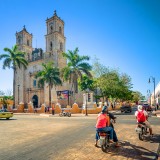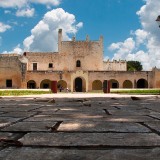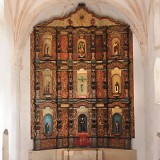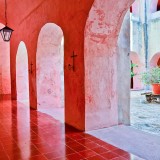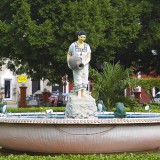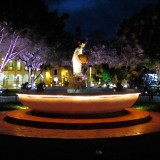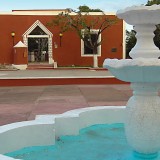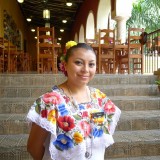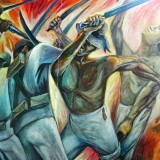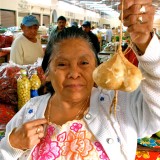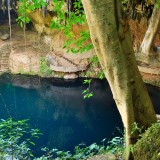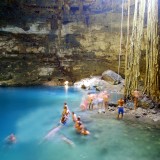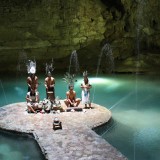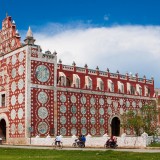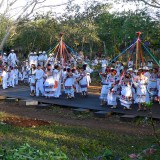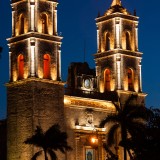loading
Francisco Cantón Rosado Park
There used to be a Mayan temple on this site, which was later demolished by the conquistadors to build new buildings. This place became the Main Square and during the 20th century the Francisco Cantón Park with the famous “mestiza” fountain in the center.
San Roque Museum
Initially founded as a hospital in the 16th century, it later became the San Roque church. Since 1998, it has been a museum about the prehispanic, colonial and social revolution history of Valladolid.
Municipal Market
The Donato Bates Municipal Market is a good place to enjoy the colors and aromas of fruits and vegetables from this area.
San Juan de Dios church
It is in front of the park of the same name and it has two square towers on the sides of the façade.
La Candelaria church
In front of the plaza by the same name, it is dedicated to the Virgin of the Candelaria, celebrated on February 2nd.
Former Convent San Bernardino de Siena
The church is of Franciscan style and its architecture is reminiscent of a medieval fortress.
Zaci Cenote
This is one of the Peninsula’s largest open-air cenotes, with crystal-clear waters and shelter for birds.
San Servasio Cathedral
Located in front of the main square, it was rebuilt in the 18th century, after a tragedy occurred there.
Casa de los Venados
House-museum of Mexican folk art. Reservations are required.
Calzada de los Frailes
Built in the 16th century to connect Valladolid to the town of Sisal. Part of this road is for pedestrians and the colonial houses that line the paved street have been restored.
Gastronomy
Its exquisite gastronomy includes regional products, and blends the ancestral taste of the Mayan Culture with innovative flavors. Panuchos, papadzules, Valladolid “lomitos” (pork loin in tomato sauce), lime soup and “cochinita pibil” (roasted suckling pig) are all recommended.
Popular Celebrations
Of note are the dances and the elegant costumes. At the end of January and beginning of February, the municipality of Valladolid holds its traditional festivals, with the most important day being February 2nd, Day of the “Virgen de Candelaria” (Candlemass), the patron saint of the city. During the festivities, rodeos, traditional dances, bullfights, group processions with colorful decorations and the traditional dance of the pig’s head take place.
Handicrafts
The weaving of hammocks, cross-stitch embroidery, “huipiles” (traditional dresses), the making of ceramic figurines, hemp rugs and bags, and Panama hats.
Introduction Valladolid
Founded in the place known as Chauac Há on May 28, 1543, by Francisco de Montejo, the Nephew. In 1545, the city was moved to the location of the ancient Mayan city of Zací (White Hawk). From its founding, during the Spanish colonization and to our present day, Valladolid has been the center of development in the eastern part of the state of Yucatan. In Valladolid, “Heroic City,” two major historical events took place : the Caste War, 1847 and the “first spark” of the Mexican Revolution in 1910.
